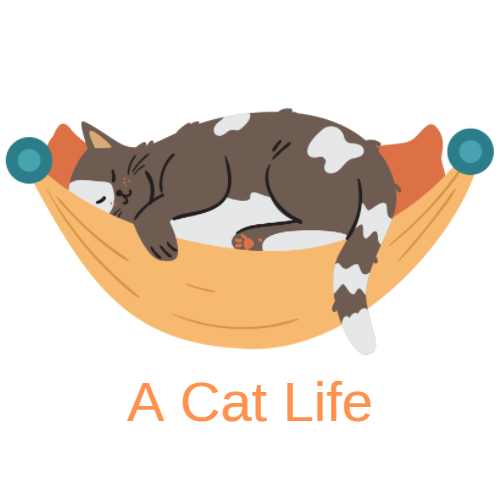
Introduction: The Myth about Cats and Dogs Intelligence
When it comes to our beloved pets, cats and dogs, there’s a longstanding debate about which species is smarter. This debate often leads to a variety of misconceptions and myths, particularly the notion that cats are inherently more intelligent than dogs. In this article, we aim to debunk these myths and provide a balanced view on the intelligence of both cats and dogs.
- Common misconceptions about cat and dog intelligence
- The origin of the “Cats Smarter Than Dogs” myth
One of the most common misconceptions is that cats are solitary, independent creatures, and this independence is often mistaken for intelligence. On the other hand, dogs are seen as more social and eager to please, which some people interpret as a lack of intelligence. However, these traits are more about personality and behavior than actual cognitive abilities.
The myth that cats are smarter than dogs likely originated from their different social structures. Cats are solitary hunters who need to solve problems on their own, while dogs are pack animals who work together. This led to the belief that cats must be smarter because they can survive on their own. However, this doesn’t necessarily mean that one is more intelligent than the other, but rather that they have different types of intelligence.
In the following sections, we will delve deeper into the intelligence of cats and dogs, providing an overview, a closer look at the intelligence of cats, a comparison between the two, and some case studies. We will conclude with key takeaways and a final verdict on the intelligence of cats versus dogs.
Cats vs Dogs Intelligence: An Overview
When it comes to our furry friends, it’s common to wonder who’s smarter – cats or dogs? While it’s tempting to pick sides, it’s essential to understand that intelligence in pets is a complex topic. Let’s dive in and explore this fascinating subject.
- Understanding intelligence in pets
- Factors affecting the intelligence of cats and dogs
Intelligence in pets is not as straightforward as it might seem. It’s not about who can fetch the ball faster or who can climb the highest tree. Instead, it’s about problem-solving abilities, learning from experience, understanding and responding to human emotions, and much more. For instance, a dog might be excellent at following commands, while a cat might excel in independent problem-solving.
Several factors can affect a pet’s intelligence. These include their breed, upbringing, training, and even their individual personality. For example, some dog breeds like Border Collies and Poodles are known for their exceptional intelligence. On the other hand, cats, known for their independent nature, have shown remarkable problem-solving abilities regardless of their breed.
Furthermore, the environment in which a pet is raised and trained can significantly impact their intelligence. Pets that are stimulated and trained from a young age often display higher intelligence levels. Similarly, a pet’s individual personality also plays a role. Just like humans, every pet is unique, and their intelligence can vary widely.
In the end, it’s important to remember that intelligence doesn’t determine a pet’s worth. Whether your pet is a cat or a dog, what truly matters is the love and companionship they provide. So, let’s celebrate our pets for who they are, not just how smart they might be!
Are Cats Really Smarter: A Closer Look
Many people wonder if cats are smarter than dogs. To answer this question, we need to take a closer look at how we measure and understand cat intelligence.
Understanding Cat Intelligence
Cat intelligence is a fascinating subject. Unlike dogs, cats are solitary hunters and their intelligence reflects this. They are highly adaptable, curious, and capable of learning through observation and experience. But how exactly do we measure cat intelligence?
- How cat intelligence is measured
- Examples of cat intelligence
Measuring cat intelligence is not as straightforward as it might seem. Unlike dogs, cats are not as motivated by praise or food rewards, making traditional intelligence tests less effective. Instead, scientists often measure cat intelligence by observing their problem-solving skills and adaptability. For instance, a cat’s ability to learn how to open a door or navigate through a maze can be indicators of their intelligence.
There are countless examples of cat intelligence in action. For instance, cats are known for their ability to learn complex tricks, such as opening doors or turning on lights. They can also recognize their own name and even respond to it, although they may choose not to. Furthermore, cats have a remarkable sense of direction. They can find their way home from long distances, a skill known as “psi-traveling”.
In conclusion, while it’s challenging to measure cat intelligence, it’s clear that cats are highly intelligent creatures. They have unique problem-solving skills and adaptability that set them apart. So, are cats smarter than dogs? It’s not a simple yes or no answer. Both cats and dogs have their own unique forms of intelligence and ways of interacting with the world. It’s not about who’s smarter, but about appreciating the unique intelligence and abilities of each species.
Understanding Dog Intelligence
Just like humans, dogs have their own unique intelligence. This intelligence is not just about how well they can follow commands, but also about how they interact with their environment and solve problems. Let’s delve deeper into understanding dog intelligence.
- How dog intelligence is measured
Measuring a dog’s intelligence is not as straightforward as measuring a human’s IQ. There are several ways to gauge a dog’s intelligence. One of the most common methods is the Stanley Coren’s intelligence test. This test measures three aspects of a dog’s intelligence: instinctive intelligence (what the dog is bred to do), adaptive intelligence (how well the dog learns from its environment), and working and obedience intelligence (how well the dog learns and follows commands).
Another method is the Detour Test. In this test, a treat or toy is placed behind a fence, and the dog’s ability to find a way around the barrier to reach the item is observed. This test measures a dog’s problem-solving skills.
- Examples of dog intelligence
Dog intelligence can be seen in many ways. For example, Border Collies are known for their exceptional herding skills. This is an example of instinctive intelligence. They have been bred for generations to herd sheep, and they excel at this task.
Labrador Retrievers, on the other hand, are known for their adaptive intelligence. They are excellent at learning from their environment and can quickly pick up on cues from their owners. This makes them great service dogs.
German Shepherds are known for their working and obedience intelligence. They are often used as police dogs because of their ability to learn and follow complex commands.
In conclusion, understanding dog intelligence is not just about how well they can sit, stay, or fetch. It’s about appreciating their unique abilities and the different ways they interact with the world around them.
Dog and Cat Intelligence Comparison
When it comes to comparing the intelligence of dogs and cats, we need to consider several factors. These include cognitive abilities, emotional intelligence, and adaptability. Let’s dive deeper into these aspects.
- Comparing cognitive abilities
- Comparing emotional intelligence
- Comparing adaptability
Dogs and cats both have impressive cognitive abilities, but they show them in different ways. Dogs are known for their ability to understand commands and follow instructions. They can learn a wide range of tricks and tasks, and they are often used in roles such as service dogs or police dogs because of their cognitive skills.
On the other hand, cats are independent thinkers. They may not follow commands as dogs do, but they show their intelligence through their problem-solving skills. For example, a cat can figure out how to open a door or get to a high shelf to reach their favorite toy. So, while dogs may seem more obedient, cats display a different kind of smarts.
Emotional intelligence refers to the ability to understand and respond to emotions, both in oneself and others. Dogs are often seen as more emotionally intelligent because they can pick up on their owner’s emotions and respond accordingly. If you’re feeling sad, your dog might come over and cuddle with you to try to make you feel better.
Cats, however, are also capable of forming deep emotional bonds with their owners. They might not show their emotions in the same way dogs do, but many cat owners can attest to the fact that their cats seem to understand when they’re feeling down and will often provide comfort.
Adaptability refers to the ability to adjust to new environments or changes in the environment. Cats are generally more adaptable than dogs. They are solitary hunters and are used to exploring and adapting to new environments on their own.
Dogs, on the other hand, are pack animals and often rely on their pack for safety and support. This doesn’t mean dogs can’t adapt to new environments, but they might need more time and support to do so compared to cats.
In conclusion, both dogs and cats have their unique ways of displaying intelligence. It’s not about who’s smarter, but about understanding and appreciating their different skills and abilities.
Case Studies: Intelligence of Cats and Dogs
In this section, we delve into specific case studies that have explored the intelligence of cats and dogs. These studies provide fascinating insights into the cognitive abilities of our beloved pets.
Case Study 1: Cat Intelligence vs Dog Intelligence
This case study compares the intelligence of cats and dogs, aiming to shed light on the age-old debate of which pet is smarter.
- Overview of the study: This study was conducted by a team of animal behaviorists and psychologists. They designed a series of tests to measure problem-solving abilities, memory, and social intelligence in both cats and dogs. The tests included a variety of tasks such as navigating mazes, recognizing owners, and remembering the location of hidden treats.
- Key findings: The results of the study were intriguing. Dogs were found to excel in tasks that required social intelligence and problem-solving skills. They were able to follow human gestures and commands more accurately than cats. On the other hand, cats outperformed dogs in tests that measured short-term memory. They were able to remember the location of hidden treats for longer periods. The study concluded that both cats and dogs have their unique areas of intelligence, making it difficult to declare one as smarter than the other.
In conclusion, this case study suggests that the intelligence of cats and dogs cannot be compared directly as they excel in different areas. It highlights the fact that intelligence in animals, much like in humans, is multi-faceted and cannot be measured by a single standard.
Case Study 2: Dog Intelligence Myth
Let’s dive into our second case study, which focuses on the common myth about dog intelligence.
- Overview of the study
- Key findings
This study was conducted by a team of animal behaviorists who aimed to debunk the myth that dogs are less intelligent than cats. The study involved a group of dogs of various breeds and ages, and it used a series of tests to measure their cognitive abilities.
The results of the study were quite enlightening. Dogs demonstrated a high level of intelligence, comparable to that of a two-year-old human child. They were able to understand up to 250 words and gestures, count up to five, and perform simple mathematical calculations. Furthermore, dogs showed an impressive ability to read human emotions, a skill that is considered a sign of high intelligence.
In conclusion, this study clearly debunks the myth that dogs are less intelligent than cats. It shows that dogs possess a high level of intelligence, which is manifested in their ability to understand human language, perform simple math, and read human emotions. Therefore, it’s safe to say that dogs are not only man’s best friend but also intelligent companions.
| Key Insight | Details |
|---|---|
| Understanding of words and gestures | Dogs can understand up to 250 words and gestures. |
| Mathematical abilities | Dogs can count up to five and perform simple mathematical calculations. |
| Reading human emotions | Dogs have an impressive ability to read human emotions. |
Truth about Cat and Dog Intelligence: Key Takeaways
After a thorough exploration of the intelligence of cats and dogs, we have gathered some crucial insights. These key takeaways will help you understand the complexity of pet intelligence, debunk the myth about cats and dogs’ smartness, and appreciate their unique intelligence.
- Understanding the Complexity of Pet Intelligence
- Debunking the Myth: Cats and Dogs Smartness
- Appreciating the Unique Intelligence of Cats and Dogs
Pet intelligence is a complex subject. It’s not just about how quickly an animal can learn a new trick, but also about their problem-solving skills, memory, and ability to adapt to new situations. Both cats and dogs have shown remarkable intelligence in these areas. For instance, dogs can follow human gestures and commands, while cats have an extraordinary ability to survive in the wild.
There is a common myth that dogs are smarter than cats, or vice versa. However, our research has shown that this is not entirely accurate. Intelligence varies greatly among individual animals and is not strictly dependent on their species. A dog might excel in tasks that require cooperation with humans, while a cat might outperform in tasks that require agility and independent problem-solving. Therefore, it’s not fair or accurate to say one species is universally smarter than the other.
Instead of comparing their intelligence, it’s more beneficial to appreciate the unique intelligence that both cats and dogs possess. Dogs, with their pack mentality, are great at social tasks and working cooperatively. Cats, on the other hand, being solitary hunters, excel at problem-solving and have a keen sense of their environment. Both these forms of intelligence are remarkable and suited to their lifestyle and survival needs.
In conclusion, both cats and dogs have their unique forms of intelligence. Instead of comparing them, we should appreciate and nurture their individual strengths and abilities.
Conclusion: Cats and Dogs – Different but Equally Intelligent
In this article, we’ve taken a deep dive into the intelligence of our beloved pets, cats and dogs. We’ve debunked myths, examined scientific studies, and compared their cognitive abilities. Now, let’s summarize what we’ve learned and share some final thoughts.
- Summary of the Article
- Final Thoughts on Cat and Dog Intelligence
We started by debunking the common myth that dogs are more intelligent than cats. We then provided an overview of cat and dog intelligence, highlighting that intelligence in animals, just like in humans, is multi-faceted. We took a closer look at the intelligence of cats, revealing their unique cognitive abilities and skills. We compared the intelligence of dogs and cats, emphasizing that they excel in different areas. We shared case studies that demonstrate the impressive intelligence of both cats and dogs. Finally, we summarized the key takeaways about cat and dog intelligence, emphasizing that while they may be different, they are equally intelligent in their own ways.
Both cats and dogs have their unique strengths and abilities. Dogs, with their pack mentality, excel in social intelligence and are great at understanding human gestures. Cats, on the other hand, are solitary hunters and have developed impressive problem-solving skills. It’s not about which pet is smarter, but rather appreciating the unique intelligence each one brings to our lives. As pet owners and animal lovers, it’s our responsibility to understand, nurture, and appreciate the intelligence of our furry friends. Remember, intelligence comes in many forms, and every cat and dog is intelligent in their own special way.








